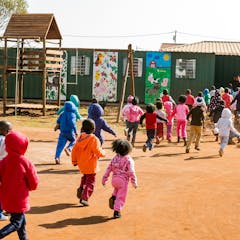
Articles on School closures
Displaying 1 - 20 of 87 articles

Children’s friendships are a vital part of their learning and development.

To boost post-pandemic math learning, a multi-dimensional approach is needed that promotes the success of the whole child: academic, physical and socio-emotional.

Insights from youth about COVID-19 school closures and youth exclusion from pandemic-related decisions suggest we have an opportunity to improve how we support youths’ rights.

It’s not news that Raac is a problem in UK, but funding to fix them is in short supply.

Teachers find their workloads difficult to manage – and the government is struggling to recruit people to the sector.

Despite technological advances, many US schools are still likely to cancel school in the event of a big snowstorm.

Although teen perfectionists often appear to be doing well on the surface, they are not impervious to hardships. They are young people who are often in need of support.

Young Ugandans have already fallen far behind in their learning because of COVID.

President Joe Biden’s suggestion that the COVID-19 pandemic is over has led to a backlash among some experts who suggest the comment is premature – and counterproductive.

Researchers studying ways to foster children’s inclusion in society worked with teachers to adapt classroom practices, like dedicated dialogue circles, to online learning.

Instruction through mobile phones can provide an effective, scalable method to provide education instruction when schooling is disrupted.

The lack of a fully interactive environment in kindergarten due to pandemic school closures may negatively impact some children’s learning in later grades.

Teachers went to great effort to help parents support their children’s learning.

Ontario’s incoming government after the election will have its work cut out for it in restoring the public’s faith after extensive school closures.

Time out of school erased a year’s worth of schooling for public school learners in South Africa.

Children missed out on some of the curriculum, but not on learning.

Many young women faced challenges with online learning and studying at home during COVID, but some showed resilience and a determination to achieve their educational goals.

Kindergarten educators who taught from home during COVID-19 and who were primarily responsible for their own children self-reported poorer mental health than those without these responsibilities.

School closures were hard, but led to new skills that should be built upon.

Early childhood development centres in South Africa, particularly in low-income communities, provide services which many of these children and their families wouldn’t cope without.
